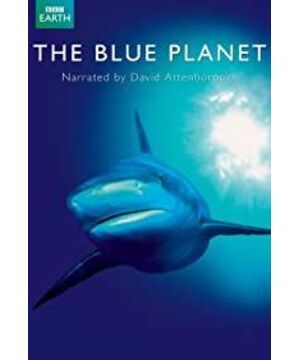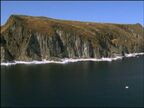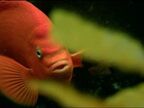01------------------- As the largest animal in the ocean, the blue whale, it depends on one of the smallest creatures in the ocean-krill , A crustacean with a length of only a few centimeters. A blue whale can eat 40 million krill in one day. The Pacific Ocean alone covers half of the earth. In terms of capacity, the ocean occupies 97% of the earth's habitable land. The distribution of marine life depends on the direction of the nutrient-rich ocean currents and the intensity of sunlight. Hammerhead sharks gather into the largest group of sharks in the ocean, sometimes thousands. The waters of Antarctica are the most sinister on earth. Most of the time, the birds on the sea are quite scattered. The Jason Minaret is a remote island located on the west side of the Falkland Islands. It has the largest albatross habitat in the world. Plankton is the foundation of all marine life. Sea turtles collectively come ashore to lay eggs in the first quarter or last quarter of the moon. Humpback whales are at the top of the marine life food chain. A female herring can lay 20,000 eggs. The migratory distance of gray whales is one of the farthest among marine life, with a total of 12,000 miles back and forth. A hagfish can eat rotten flesh several times its body weight within a few hours. 02------------------- There are more people who have been to space than those who have been to the bottom of the deep sea. The most extensive net of death is set by the tube jellyfish. The survival of the twilight zone depends on seeing and not being seen. Calculated based on the proportion of teeth to the body, the teeth of the fang fish are the largest in the sea. The broad-throated fish can swallow prey the size of its own. Female lantern fish have lanterns. In the deep sea, most of the biological light is blue or blue-green. The sharpest eyes in the deep sea belong to a giant ostracod. The Guapi Cap jellyfish possesses the ultimate biological light defense weapon. Sunlight only has a direct impact on the 100 meters above sea water. Photosynthesis can only be carried out here, and coral reefs can only be formed here. Deep sea fungus corals have the longest polyps in the world. The gray sixgill shark is a living fossil and has not changed for 150 million years. This gray whale carcass that fell into the deep sea can be eaten by scavengers there for several years. Scientists found 178 species of animals in the spine of a whale carcass. At present, only 5 submarines in the world can dive into the ocean basin, and they have explored only 1% of the basin. We all know more about the surface of the moon than the ocean basins. In the very center of the ocean basin, there is the largest geographical structure on the earth-the mid-ocean ridge-and it is also the largest mountain range on the earth. On the sea surface, water turns into water vapor at 100 degrees. But on the ocean floor, under tremendous pressure, the water remains in a liquid state even at a high temperature of 400 degrees. Pompeii can tolerate high temperatures above 80 degrees and is currently the most heat-resistant animal known. 03------------------- The survival rate of juvenile yellowfin tuna may be only one in a million. Sailfish is one of the fastest fish in the ocean. Flying fish has been running for his life all his life. There are very few floating objects without living creatures inhabiting. Cannonball fish will occupy the habitat. Sunfish is the heaviest bony fish in the sea. Sunfish usually live in the deep sea and feed on jellyfish. There are more than 23,000 islands in the Pacific Ocean. The silk shark eats injured fish exclusively. The water bird can dive 15 meters. 04------------------- Beluga whales can hold their breath for up to 20 minutes. For polar bears, keeping their hair free of salt is the key to keeping warm. They use snow as a descaling paper. In winter and early spring, arctic foxes rely entirely on polar bears for their prey. Toddlers with hooded seals start to be independent after only 4 days of suckling milk, which is the shortest lactation period among mammals. Polar bears have an extremely sensitive sense of smell. They can sniff out baby seals hidden in the snow two kilometers away. Brunic Guillemot looks like a flying penguin. The pilot whale is the only large whale that stays in the Arctic all year. Polar bears can swim continuously for 100 miles. Like walruses, beluga whales also need to shed their skins. Antarctica is the coldest place in the world, with a maximum temperature of minus 50 degrees. Krill can shrink in size to reduce energy consumption. Zavdskiy Island has the largest penguin colony in the world, with about 2 million chinstrap penguins breeding here. Minke whales are the largest whale species in the South China Sea. Krill is a staple food in the Antarctic food chain. A humpback whale can eat two tons of krill in a day. Leopard seals, like polar bears in Antarctica, are the most powerful predators in Antarctica. Aware of the existence of leopard seals, the penguins crowded in groups on the edge of the ice, and no one wanted to venture into the water first. 05------------------- Seasonal seas are the most productive oceans on earth. Cyber Island has the largest group of gray seals on earth. The annual production of floating algae in the sea far exceeds the total amount of land plants, reaching 6 billion tons. A few centimeters wide Xunma jellyfish can collect thousands of copepods in one day. Macroalgae can grow nearly 1 meter a day in midsummer. A fully grown macroalgae is 100 meters long. Sea otters can stay on the bottom of the sea for up to 10 minutes . Seals are sometimes very cruel. Sharks can keep their body temperature higher than the surrounding sea water in order to move quickly. Dolphins mostly forage at night, and during the day they concentrate on socializing. Every winter, 500 million tons of adult herring seek refuge in the deep sea. 06------------------- Of all the oceans, the warm waters of the tropics have the richest and most colorful biota. Without corals, other creatures cannot survive. Corals grow at an astonishing rate of 15 centimeters per year. A mature coral reef can be thousands of years old and stretch for miles. The whale shark is the largest fish in the sea. Coral reefs can only be found in clean and warm shallows in the tropics. 98% of the food needed by corals is made by seaweed in the body. Coral uses color to control light. Corals spit out their internal organs and directly digest their opponents. The powerful beak of the giant parrot fish can crush rocks. Each female whale will continue to care for the baby whale for 6 to 12 months. Each coral will mate the time precisely at a certain time on a certain night, in order to achieve the maximum number of insemination. A strong storm can destroy the entire coral reef. 07------------------- The waves in the Bay of Fundy in Nova Scotia are the strongest in the world. The right whale is the fastest whale. The retrograde technique of sandblasting crabs is the best in nature. The flounder is an expert in hitting the waves. The strongest tide occurs when the attraction of the sun and the moon work together, that is, after the new and full moons. The closer to the equator, the weaker the tide. Snails are addicted to tulip snails. At the speed of Conch World, Helix runs like a Ferrari. The tide is the rhythm of the sea and its metronome. 08------------------- The coastline is the border between land and sea, and it is also the most dynamic zone of marine ecology. The large lizards of the Galapagos Islands are the only lizards in the world that are proficient in water. Male turtles stay in the sea all their lives, but female turtles need to go ashore to lay eggs. Only 1% of baby turtles can live to adulthood. Ninety-five percent of the seabirds on the earth build nests, and most of them form huge and spectacular settlements. The Stella Sea Eagle is the largest eagle in the world. The biggest challenge for birds to build nests on the coast is none other than penguins. For whales, swimming into shallows is extremely dangerous, and every year many whales learn a lesson (stranded and die). The coldest sea on earth is in Antarctica. In areas with denser settlements, one-fifth of the small
View more about The Blue Planet reviews









